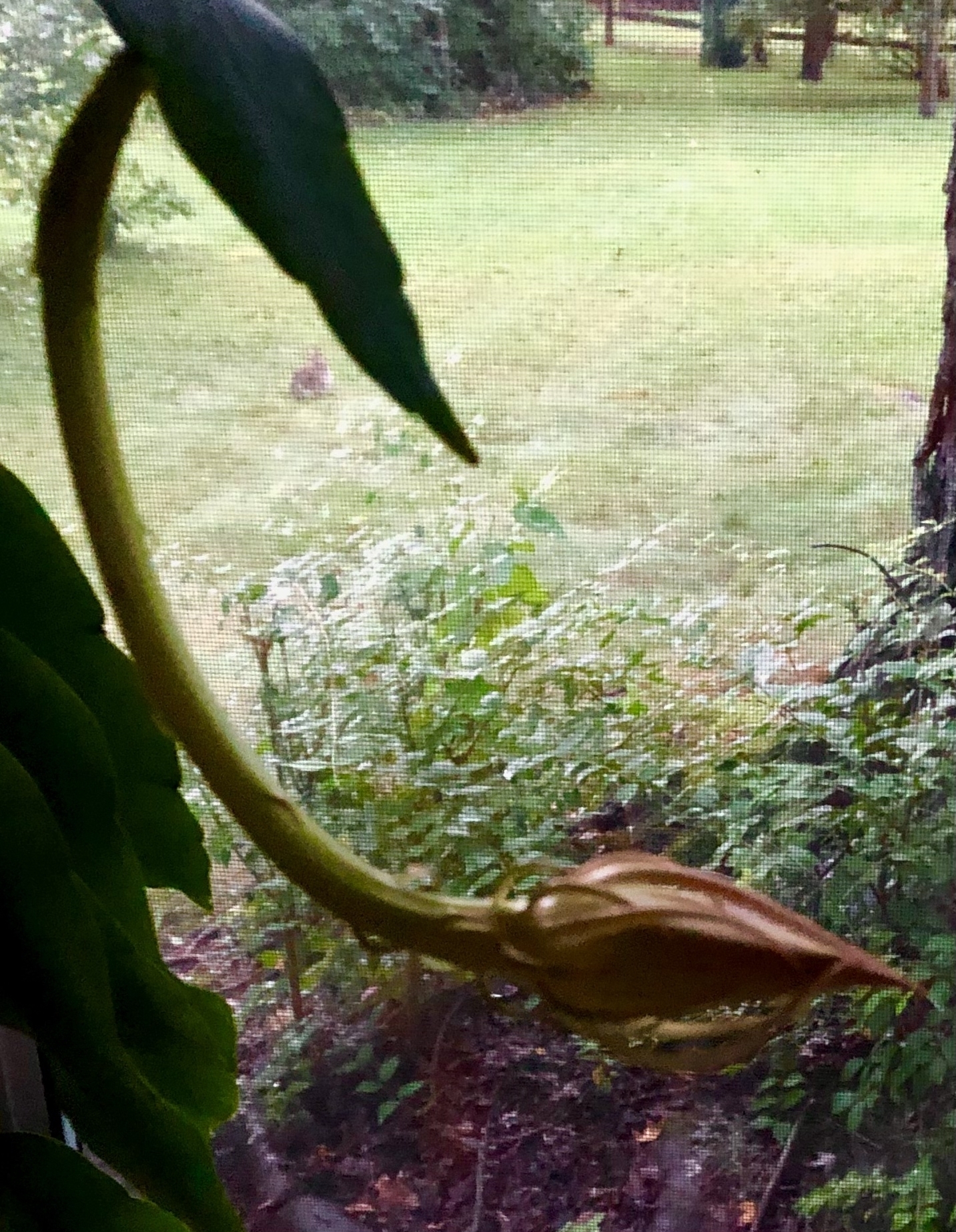04 September 2022
Jamál, 16 Asmá’ (Names), 179 B.E
Seen
It’s been a cloudy, rainy day with scarcely any break from the wetness—certainly not favorable conditions to be traipsing around the yard looking for interesting photo ops. But when I checked on the queen of the night bloom (might open tonight!), a rabbit showed up in the background keeping a low profile:

Not as clear a view as I had hoped, but an interesting juxtaposition; sort of reminiscent of a story by Louis Carroll: the queen and the rabbit. See, it HAS been a long day ;-)
Done
Drafted the introduction to “Time-Based Economy.” At this point, it has seven sections that together describe my hypothesis for the project. Tomorrow, I will convert it into a page on Frameworks for Understanding the World. After that separate articles related to it can be posted in upcoming weeks on either Frameworks Frameworks for Understanding the World or Greener Acres Value Network News depending on the central theme of each. Stay tuned…
Noted
Astral Prospecting on Instagram and Astral Prospecting on Facebook
Marc Bosserman on Instagram Marc Bosserman on Facebook, and Marc Bosserman Music and Musings on YouTube
Quoted
Life is the expression of composition; and death, the expression of decomposition. In the world or kingdom of the minerals certain materials or elemental substances exist. When through the law of creation they enter into composition, a being or organism comes into existence. For example, certain material atoms are brought together, and man is the result. When this composition is destroyed and disintegrated, decomposition takes place; this is mortality, or death. When certain elements are composed, an animal comes into being. When these elements are scattered or decomposed, this is called the death of the animal. Again, certain atoms are bound together by chemical affinity; a composition called a flower appears. When these atoms are dispersed and the composition they have formed is disintegrated, the flower has come to its end; it is dead. Therefore, it is evident that life is the expression of composition, and mortality, or death, is equivalent to decomposition. As the spirit of man is not composed of material elements, it is not subject to decomposition and, therefore, has no death. It is self-evident that the human spirit is simple, single and not composed in order that it may come to immortality, and it is a philosophical axiom that the individual or indivisible atom is indestructible. At most, it passes through a process of construction and reconstruction. For example, these individual atoms are brought together in a composition, and through this composition a given organism—such as a man, an animal or a plant—is created. When this composition is decomposed, that created organism is brought to an end, but the component atoms are not annihilated; they continue to exist because they are single, individual and not composed. Therefore, it may be said that these individual atoms are eternal. Likewise, the human spirit, inasmuch as it is not composed of individual elements or atoms—as it is sanctified above these elements—is eternal. This is a self-evident proof of its immortality. 1
- ʻAbduʼl-Bahá. The Promulgation of Universal Peace: Talks Delivered by ʻAbduʼl-Bahá during His Visit to the United States and Canada in 1912. Edited by Howard MacNutt. 2nd ed. Wilmette, Ill: Baháʼí Publishing Trust, 1982, 306. https://www.bahai.org/library/authoritative-texts/abdul-baha/promulgation-universal-peace/22#066994489 [return]